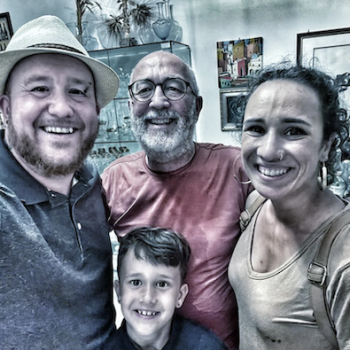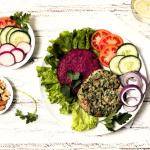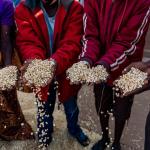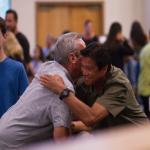In May of 2022, I step out of my home in Yakima, Washington to begin a global journey that will take me to Modena, Italy. There I’ll fulfill an incredible dream: meeting the world’s best chef and seeing Jesus in the eyes of Massimo Bottura.
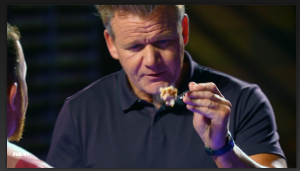
I honestly begin this journey without a clue of what I am about to experience. Many people say that you shouldn’t meet your heroes. At the same time that hasn’t ever been much of a let down for me. Gordon Ramsay, in all of his dictatorial and scorched-earth persona is incredibly kind. This is true for me, both before and after enjoying my fried chicken. Upon meeting Nashville’s Sean Brock, I am able to see in him so much kindness. I still can see him lighting up like a bright-eyed child as I tell him his burger is the best I’ve ever eaten.
Ruth Reichl sent incredibly kind regards when I prepared a lunch for her in my hometown. I wish I had met her, but her expressed gratitude was a gift in and of itself. British chef Rosemary Shrager gave me, what she called, the highest compliment she could give: a royal British salute.
BUT MASSIMO IS DIFFERENT
Massimo Bottura is a completely different animal. Every chef above is a legend in their own right. Each of them are known for the contributions they make to the food world. Yet none of them – in my opinion – hold a candle to the work and contributions of this Italian legendary chef.
I first remember discovering Massimo when watching a special about him on Netflix’s Chefs Table. Listening to his stories, his inspiration, I am captivated. The way that he gives back to his community and the world, time and time again, remains a heroic inspiration in my life.
Massimo is an artist in the kitchen, but like any true artist he appreciates and values the work of others. You can see it in his love for paintings, artistic presentations, and in music. It’s not difficult to understand his love for art by the beautiful cars that he collects.
Most importantly, you can see his love for beauty in the way he works diligently to make the world a better place. Similar to my love for my own region, for Massimo it begins right at home in Modena.
A LOVE THAT RESCUES

Love rescues. I believe that with all of my heart. For many in the Christian faith, rescue can look incredibly painful. It starts with shaming a person for needing rescuing. We use words like “sinner” and “reprobate” and “dirty.” Strangely, I can’t imagine looking at someone who is drowning and start shaming them. Beginning my saving attempts with words like, “If you’ll just admit what a terrible swimmer you are, then I can jump in to rescue you.”
No. Rescue doesn’t get caught up with the circumstances leading to the danger. Rescue steps in and puts its own neck on the line in order to bring someone else to safety.
Parmigiano-Reggiano is one of the most recognizable cheeses in the world. It and the farmers that create them find themselves in need of saving in 2012. This happens as Emilia-Romagna is hit by two devastating earthquakes. Homes and businesses and lives are lost, and the region faces the crippling of its economy.
A HERO IN A CHEF COAT
Imagine the loss of over 360,000 wheels of Parmigiano-Reggiano amounting over $200 million dollars of damage. No one is shamed for the way they set the wheels of cheese on the shelves. In that moment, you don’t hear a single voice shaming the farmers for their loss. Instead, you see Chef Massimo Bottura, a man of global renown, stepping up to the plate and creating a solution.
Massimo starts by taking one of his recipes for cacio e pepe, sending that recipe around the world, and inviting people to make it with him. The catch is that they will need to purchase Parmigiano-Reggiano for the recipe.
In the end? People are invited to join Massimo online to enjoy his recipe together. Simultaneously, a fundraiser is held where every single one of the 360,000 broken wheels of cheese are sold. And Massimo becomes a hero, not in a cape, but in a chef coat.
THE JOURNEY BEGINS
Upon traveling to meet this legendary man of the kitchen, I take an overnight flight from Seattle to London. Arriving early in the morning and having an overnight layover, I excitedly make my way to Piccadilly Circus. Like a child in wonder, I spend the day walking around a town I have not yet visited.
London is exactly the way you expect it to be as a child growing up watching Mary Poppins. I half expect her to appear at any moment, floating down from the sky with her umbrella.
Spending the day enjoying the sights, being reminded of my first visit to New York City, and experiencing the overwhelming sense of global connection is wonderful. Piccadilly Circus continues to give me vibes of a much more historic and arrogant version of Times Square. In a good way.
After visiting Big Ben, and walking along the River Thames, I make my way toward Buckingham Palace. What a sight! I keep hoping that the queen will peek her dainty head through one of the windows, but that is not to be. Believe me when I say that I certainly
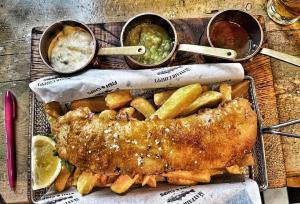
don’t realize she will soon be gone from this world, making way for a new royal leader.
From there, it’s on to a bucket list goal of eating fish and chips in England!
A BUCKET LIST MOMENT FOLLOWED BY FEAR
In the evening I fulfill an unexpected bucket list goal of seeing The Phantom Of The Opera in London. Truly this is a chance opportunity, that I never would have experienced without stumbling upon the theatre as I walk around town.
After the show, I begin walking back to catch the Tube to my hotel, and in the process of following directions on my phone, it is snatched. A bicyclist rides up next to me, swipes it right out of my hands and rides off. This is a truly terrifying moment. I start to panic, thinking “What do I do? Where do I go? Who do I talk to?”
Thankfully, my senses begin coming back to me, and as I return to my hotel, I form a plan. The next morning in the airport I’ll be able to purchase a new phone. My biggest concern? Not being able to take pictures. Fortunately, the problem is solved before arriving in Bologna the next day.
A QUIET RIDE TO MODENA
Having traveled to Italy in the past, I have a number of expectations regarding what flying into Bologna and driving to Modena will be like. Ancient buildings, sepia skies; but none of that is the case. In fact, the airport in Bologna reminds me strangely of the small airport in my hometown of Yakima. The terrain is familiar as well, and will get even more familiar as I make the short trip from Bologna to Modena.
My private driver ushers me to the sleek black Mercedes-Benz, politely packing my luggage in the trunk of the car. He will remain silent on the drive. Perhaps for the sake of his serious responsibility as a private driver or perhaps because of the language barrier. Regardless, words spoken are few.
I take some time to write in my journal, documenting my adventure thus far, and noting the incredible similarities between the quiet, brown and rolling hills of our drive. I can’t help but relish in the strange familiarity, picturing myself driving only minutes outside of my home in the beautiful Rattlesnake Hills wine country.
CASA MARIA LUIGIA
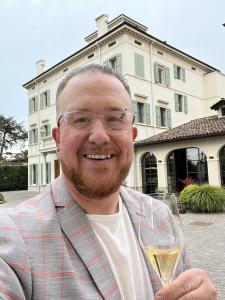 Italians are of course known for their fast driving, and my driver is no exception. What could have been a trip that made me late for the welcome party ends up getting me to the property much quicker than expected. Thanking God for his providence, I step out of the car and onto the property of Massimo himself: Casa Maria Luigia.
Italians are of course known for their fast driving, and my driver is no exception. What could have been a trip that made me late for the welcome party ends up getting me to the property much quicker than expected. Thanking God for his providence, I step out of the car and onto the property of Massimo himself: Casa Maria Luigia.
I barely have time to take in any of the breathtaking scenery before a glass of 2010 Italian brut is placed in my hands, and I starttaking note of the other guests who will join me on this magical journey. I do, however, begin to look around and I realize the gorgeous three-story home we’ll be staying in is directly behind me.
ICE CREAM GARGOYLES?
The playfulness of Massimo shines as I see the small statues sitting boldly on the ledge of one of the private rooms. Where most people in ancient Europe would place stone gargoyles, Massimo has, with the vision of a 5 year old, placed two stone altars to ice cream. Multiple scoops no less, with a proud spoon standing at attention in the middle of each.
Across the parking lot from the home, is Massimo’s residential restaurant. An homage to all of his most famous dishes, which we will
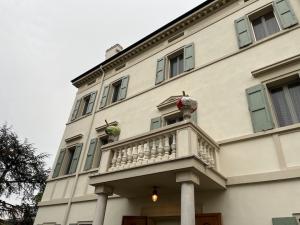
be celebrating in just a few short moments.
Just to the side of the two palatial structures, I can see a rustic pond, surrounded by Italian sculptures, with a fountain reaching for the skies. To add to the magic, the spring cotton has begun to float through the air like fairies. It’s difficult to believe that this humble chef from quiet Eastern Washington is experiencing this beauty.
NEW FRIENDS
As everyone stands, caught in the middle of these two beautiful buildings enjoying Italian brut in Italy, we begin to make introductions.
I have the joy of meeting Chef Curtis Duffy, a Michelin-star chef from Chicago (also of Iron Chef fame) and his wife Jennifer, and friends Jeremy and Kym. They have traveled the long distance as I have.

A gentleman and inventor by the name of Adam introduces himself, and asks if I would like him to take my picture by the fountain. I’m grateful, simply because I know that there will be many selfies on this trip, and this will be one less.
Wanting to meet more people, I begin to plot my next introduction, however the service team invites us inside to the dining room in preparation for our first meal.
I sit down at a table with some ladies who introduce themselves as Mara and Emma. Stories begin, and learning about their lives and reasons for coming on this trip are fascinating. I can sense a real humility and zest for life in each of them. I find myself sharing about my family, my team, my work with our youth culinary and business school. It becomes clear, quickly, that these ladies already feel like friends.
AND THEN THERE WAS MASSIMO
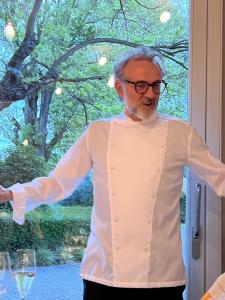
As we continue chatting, suddenly the door opens behind, and almost like Kramer in Seinfeld, Massimo Bottura floats through the door. His smile is contagious, and it feels like I’m on a movie set as I see my hero for the first time.
His chef coat is perfectly pressed, his hair a bit predictably wild, and his dark black rimmed glasses frame his child-like smile. He genuinely seems to be as excited as we are. He says hello to our table, and then walks behind me and places his hands on the back of my chair.
BREATHING DOWN MY NECK
I must seem incredibly awkward as I want to see the legend who is standing behind me and breathing down my neck, laughing and welcoming us. Like anyone would be, I’m not sure how to twist myself around to see him, without feeling like I’m the one invading his space. I simply listen, waiting for the chance for him to move so I can see him more clearly.
After a few moments, he makes his way to the front of the room, saying hello to other guests on his way. Finally, he stands behind his massive plating table, and begins addressing the entire room.
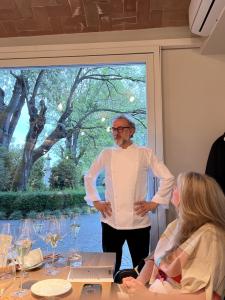
He tells us that we will soon be eating the very best and most famous of his creations. He then invites his head chef, Chef Jessica Rosval, to come and join him. She is the one who will be telling the stories of each of the mind-blowing 8+ courses that we are about to enjoy.
CHEF JESSICA ROSVAL
Chef Jessica Rosval, I would soon learn, is a legend in her own right. A Canadian born woman, only 36 years old, that had moved to Modena specifically to fight for a job with Massimo.
She tells us the story of introducing herself to him at his flagship restaurant, Osteria Francescana. Her aim is to have Massimo invite her to stage in his kitchen, however Massimo recommends that he ask others of his chef friends to work with her. This is not good enough for Chef Jess, and she insists that he give her a chance to work with him.
Massimo must love her tenacity, because he offers her the chance. Now, years later, she stands in front of us as his most important staff member, and the chef he entrusts to recreate his iconic dishes.
A MASTER ORATOR
Jessica’s story telling is second to none. She walks us through the stories behind the dishes, opening up to us the reasons and
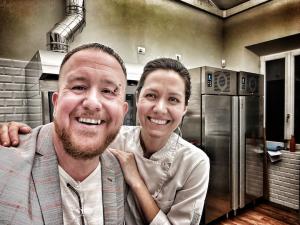
creativity behind the meal we’re about to enjoy. It takes an incredible chef and orator to be able to make you feel as if you are already eating before you’ve taken a single bite.
I don’t think it possible to be any more excited than I already am, but I am so wrong. And I absolutely sit on the edge of my seat, waiting for the first plate to arrive.
COURSE ONE – PASTA AL’PESTO
My mind immediately begins playing tricks on me, as the first course arrives. A wide-rimmed bowl, filled with tiny squares that I can’t quite decipher, along with sliced asparagus. Beautiful herbs and flowers sitting on top – mint, fennel fronds, and micro-parsley. The base is a deep green, and I wouldn’t know much more until I begin to carefully taste and experience.
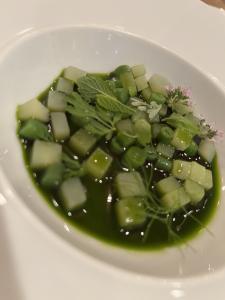
The dish is born from a collaboration with one of Massimo’s staff who wished to prepare pesto for the rest of the team. Everyone mocks this Asian chef, because no one in their right mind would prepare pesto for experienced chefs of that caliber without being Italian.
FROM FAILURE TO GENIUS
As expected, the pesto is a huge failure. And yet Massimo sees an opportunity. The pesto is set to the side, but it begins to age. And upon aging the pesto, it is discovered that it begins to release the most amazing flavors. With a little play and a little finesse, the dish in front of me is born. Gellified umami squares of vegetable, paired with satin-y aged pesto, topped with rich dark green olive oil that is ultimately destined to become a legendary creation.
The pesto of course is the star, producing a texture that reminds me of hummus. Every taste-bud in my mouth begins to explode with delight. The first dish of many to come, but the first dish that I have ever tasted from a man I’ve watched from afar for so long.
COURSE TWO – IF I AM WRONG, I AM RIGHT
I absolutely adore the way that Massimo names his dishes, and this dish is no exception. This begs the question, though, of why
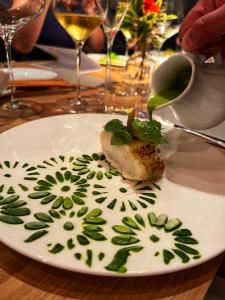
Massimo would name this dish the way that he has.
My answers come quickly enough, as I realize that this is a dish that is the most strange fusion of Italian and Asian cuisine.
The plating is a total work of art, no surprise from the chef who loves everything artistic. A large white plate is covered in an edible floral painting. I may never know exactly how that he creates the texture and flavor of his paint-like ingredient, but what I do know is that it is the most tender of watercress flavors. Yet in a texture that will forever be unforgettable.
IS THIS ITALIAN OR ASIAN?
In the center of the plate is a generous portion of buttery cod, that has clearly been seared off with a torch right before serving. It is topped with more fresh ingredients – basil, mint and fennel fronds. The presentation is still taking place, however, because his carefully trained staff are now walking around the room, and drizzling a beautiful sauce over the top of the cod. Exciting flavors spring to life with elements of lemongrass, coconut, and more basil. Perfectly emulsified, this is the kind of sauce that you could probably drink straight from a glass, every day for the rest of your life.
The firm cod, having been both smoked and poached in butter and possibly even some miso, reminds me of Asian dishes that I’ve enjoyed in the past. At the same time, it is completely original, and screams of Italy. How? Only the master would know.
Some might say that it is wrong to combine other cultures with a cuisine so perfectly Italian. But Massimo hits it on the head, because if he is wrong, he is most definitely right.
COURSE 3 – RISO IN CAMOUFLAGE
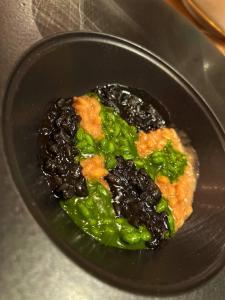
Only a genius can bring you a bowl of risotto that looks like this and blows your mind simultaneously. Another homage to his love of art, Massimo brings us a dish that truly looks like edible camouflage. Colors of gray, green and black play together in the bowl, making you consider every picture of every camouflaged hunter you’ve ever seen.
There are no microgreens or other garnish to top this dish, it is simply humble. As someone who loves to play with the individual flavors of food, I can’t wait to dive into this dish. Tasting everything individually, and then playfully combining the flavors to see how they all work together.
DIGGING INTO THE COLORS
The gray colors are intense flavors of mushroom, most likely several different kinds.
Green flavors within the rice are shallot with white wine vinegar and parsley.
The black, and possibly the most exciting on the plate for me, are delicate with the flavor of squid ink and shellfish stock.
Each on their own represent truly magnificent preparations, but it’s the way that they come together that makes the hair on the back of my neck stand up.
Most everyone knows that a perfect risotto must be cooked exactly al dente. It has to be creamy without being too liquid-y. Every element must be perfect, or else it is a failure to be despised and detested. Make no mistake, there is nothing but pure perfection in this dish.
As with all of the courses, these are not large servings. At the end of every bite, you want to stop so that it won’t come to an end so soon. And yet there is the promise of another exciting plate soon to arrive.
COURSE 4 – THE 5 AGES OF PARMIGIANO-REGGIANO
Course 4 is the dish that I am most excited for to this point. I’ve been watching Massimo talk about this dish for years, and to be here now, preparing to eat it is almost too much.
The story of this dish alone builds the anticipation. Massimo, earlier in his career, created this dish to the dismay of the leaders in Modena. In fact, they called him and told him that he should please stop serving this dish, because it was disrespectful to the culture.
Years later, with Michelin stars, world-renown and community building respect, the community celebrates Massimo as a hero. A hero of food, of philanthropy, creativity and as a master representation of all things Italy.
BEGINNING TO SEE THE IMPRINT
I can’t help but be reminded of the way the world works when reformers show up on the scene. Reformers disturb everything that is considered sacred, whether it is really sacred or not. It is only time that will tell whether their efforts will be remembered. Jesus is the greatest example of reformation amidst controversy, but 2000 years later we still know who He is, and much of the world holds onto His life, death and resurrection.
While I would never compare Massimo to my Savior, I always look for the imprint of a good Creator. If we are truly created in the image of God, then there is something unique within every human that shows off His goodness and creativity.
In Massimo, I’m beginning to see the Father’s love for beauty, controversy and reformation. I believe in a God whose artwork is second to none, has no problem ruffling feathers, and who loves to change the status quo. A God who is not willing to let us ever stay the same, because like stagnant water, things that stay the same can go bad.
Of course, this is only a taste of what I will eventually see, and come to admire even more in this incredible chef.
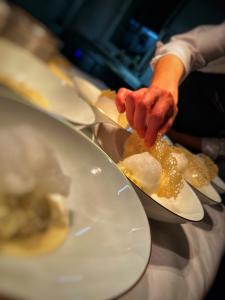
SO WHAT ABOUT THE CHEESE?
Imagine the brashness of a person who is willing to put 5 different elements of cheese onto a plate, and at the same time be one of the most respected chefs in the world.
That is this dish. In fact, in the midst of my excitement, I look up and see them plating at the counter. Decidedly risky, not knowing if I would be asked to sit down, I make my way to the front. I’m so captured by watching this dish come together, that I almost forget to take pictures and video. Artists and magicians, with a little bit of Energizer bunny mixed in.
After taking my seat, the plates begin arriving at our table. Not only is it cheese-on-cheese, but it’s also white-on-barely-off-white. The untrained foodie would have no idea what they are about to partake of.
ELEMENT 1 – THE SAUCE
There is a sauce at the bottom of the dish, that one quickly realizes is the only portion that does not have a body. A rich broth made from capon, and mixed with 30 month aged Parmigiano-reggiano. For those not familiar with capon, it is the castrated rooster that is fed a rich diet of milk and porridge. It’s something that I have seen all over Italy, used in many different ways.
ELEMENT 2
On top of and to the side of the sauce is a beautiful element of what looks like thick whipped cream, but is actually a demi-souffle’. The only way to describe the texture is to think of an aerated, fragile mousse that just barely has a bite before melting in your mouth. The aging on this Parmigiano-reggiano is 24 months, and also includes local ricotta.
ELEMENT 3
On the other side of the demi-souffle’ is a smooth mousse of 36 month old Parmigiano. It, too, has been mixed with capon broth, a little cream, and sits on the plate, looking like the most beautiful flowing satin sheets.
ELEMENT 4
Standing at attention in the center of the mound is a crisp 40 month Parmigiano wafer. It’s as thin as a piece of paper, and will add a much needed crunch to the entire dish. It also provides a vehicle for separating out the flavors, and being able to enjoy each element on it’s own before everything starts melding together.
ELEMENT 5
The final and fifth element is the air of Parmigiano-Reggiano that has been aged for more than 50 months. Think about that! Cheese that was created and allowed to patiently mature for over 4 years! It begs the question, “why would anyone use this vintage cheese to create an ‘air’?”
I think the answer is quite simple: because you’ll have nothing to get in the way of tasting the purest essence of that cheese, in all of it’s ancient glory. The brilliance of Massimo here is that he’s not only used the grated Parmigiano, but he also adds the rind.
Rind of the cheese here is arguably where the most cheese-funk will even come from. It’s the brave guardian of the inner cheese. It provides a shelter and takes on whatever the outside world throws at it. All while the delicate cheese inside grows and ages.
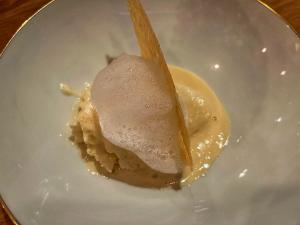
BUT WHAT DOES IT TASTE LIKE?
The dish is something that will ultimately take your breath away. Every single part of the dish screams with it’s own individuality, honoring the masterful work of humble cheese farmers. It is Modena on a plate, perhaps even the entire region of Emilia-Romagna.
There is salt, and then there is sweet. One moment you are crunching down on the Parmigiano-Crisp, and the next moment you’re washing it away with the sauce. Umami in the aging process stands on it’s own too feet, while the sour notes of the cheese pop as well.
Taking a bite with a little bit of every aspect hits each taste bud, and makes your mouth smile without your permission. It is the heart of a child with the artistry of a poet that has understudied with a brain surgeon.
And it is everything I hoped it would be.
COURSE 5 – THE CRUNCHY PART OF THE LASAGNA
Playing on childhood memories is something that I always try to incorporate into my own food process. One of my favorite complements is when a friend or guest says that my food reminds them of something from their childhood. Or a dish that takes them back to the kitchen with their grandmother.
A few years ago, I had the honor of serving a local legend in one of my restaurants. He and his family are builders of a legacy in the Yakima Valley through an Italian restaurant called “Gasperetti’s.”
As he sits at my Pacific Northwest Italian restaurant, Il Grasso, I take him a sample of an off-menu dish. This is a dish that I plan to add to the menu at that time, my own version of a beautiful pesto. After giving him some time to enjoy it, I check back in. As I kneel at his table, this humble hero – John Gasperetti – now in his 80’s, looks at me and says, “Shawn, this reminds me of my father’s pesto. It’s wonderful.”
I can’t tell you what that still means to me to this day.
A MICHELIN STARRED MEMORY
Sitting in Casa Maria Luigia, awaiting the next course, I am about to share in one of Massimo’s fondest memories. He begins to explain that this course is called “The Crunchy Part Of The Lasagna.”
You can almost guess the inspiration behind the dish. It takes him, and many other Italians, back to their grandmothers kitchen. He
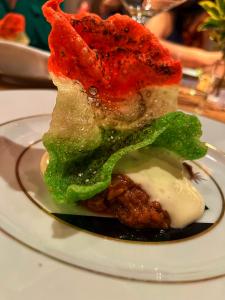
brings us into the story, reminding us that the best part of the lasagna is always the edges. It’s the pieces that get a little too dark in the baking process. Instead of presenting us with an entire plate of lasagna, he is about to deliver only the crunchy part.
JUST A PORTION OF A PAN OF LASAGNA?
Now, let’s break down the obvious question: does Massimo simply bake a lasagna, take off the charred bits, and throw away the rest? Absolutely not. This is a refined process that begins with creating a pasta shape that takes over 5 days to finish. Don’t ask me to recount the process, because I truly don’t understand how they make it all work. But they do.
From there, he paints the crunchy portion like an Italian flag. He sticks it on top of the most succulent veal bolognese that I have ever experienced. It’s what I expect culinary velvet to taste like, if such a thing exists.
The béchamel sauce topping the bolognese is smooth, and unbelievably light.
The lasagna crisp itself is almost like a pork rind. It bubbles and pops in your mouth, with just enough char to take you to that special memory in your mind.
What Massimo does, is perfect a dish that celebrates your entire life up to this moment.
COURSE 6 – BEAUTIFUL, PSYCHEDELIC SPIN PAINTED VEAL
The dish that I find myself waiting for now is another of Massimo’s classics that I’ve watched and wished to experience for years. A plate that takes you back to spin painting as a child. Do you remember? The fun and messy art project of placing paper on a spinning base, and shooting in all of the paint your heart desires. In the end, you have a piece of art that has been created, mostly, by motion.
Motion is certainly not to thank for this dish, but it plays a significant role. Because no one shot me down when I wanted to approach the plating table before, I stand up once again. This time, others join me, realizing they will be allowed to see it up close as well.
LET THE PLATING BEGIN
While the plating table has warming lights hovering above, this is still a dish that requires many hands. Massimo and chef Jessica will take the lead, but much of the other kitchen staff is involved as well.
It begins with the painting of the “colors,” sauces that have been made with only the pure essence of each vegetable. Each color is beautiful and vibrant. If you were to tell me that they came out of a paint bottle, I would believe you.
Reds, and oranges and greens splash onto the plate, alongside a cream colored sauce that I am impatient to discover. From there, the beautiful bright red veal with a dark crust on the outside is placed in the center of the plate. Massimo finishes each plate with another sauce, perhaps a balsamic, as the final touch. And then the servers begin to deliver the finished artwork.
VEAL AND THE ELEMENTS OF LIFE
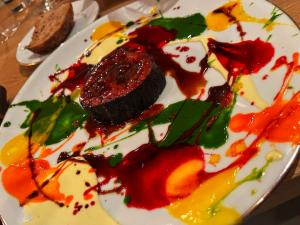
As someone who loves burnt food, I find myself getting so excited about the crust on the outside of the tenderloin, which I’m certain has been cooked sous-vide.
The crust is a combination of vegetables and herbs, completely burnt over charcoal and crushed to an ash. This flavor adds a fantastic earthiness. It’s reminiscent of the food the young cow has eaten every day of it’s life leading up to this moment. This mimics the life of the animal, pairing it’s flavors with the body that has been infiltrated and pre-seasoned with vegetation at a beautiful farm.
Of important note is that veal farming in the European Union has improved dramatically. Many laws have changed allowing for a much better welfare of the animal. That’s one of the reasons that you can trust that the animal has enjoyed a lot of milk, but also has been given vegetation as part of its diet. There is a lot more freedom for the calves as well.
Anyone who loves to grill, will tell you that charcoal is almost as good as it gets when it comes to preparing meat. I would only argue for wood as an equal participant.
EXPLORING THE FLAVORS
The green sauce reminds me of arugula, in all of its green, peppery beauty.
There is a red sauce that tastes like fruit, perhaps even cherries which are in season this time of year.
The orange and yellow sauces taste like the brightest bell peppers you’ve ever tasted.
Taking the place of white is an incredibly smooth pommes’ puree. Potatoes that have been riced, perhaps multiple times, and combined with cream to create a velvety texture.
And again, I’m not certain, but I think the final sauce that has been drizzled over the entire plate is a reduced balsamic. This makes perfect sense, considering the region, and that the best and only true balsamic in the world is produced right here.
While the plating looks like something a skilled child would come up with, you also feel like a child eating. It’s easy to get caught up exploring the many ingredients, combining them in ways that seem best to you. Only a chef who is completely confident in his talents would leave the combinations up to his or her guests. Massimo is clearly a confident chef.
COURSE 7 – THINK GREEN
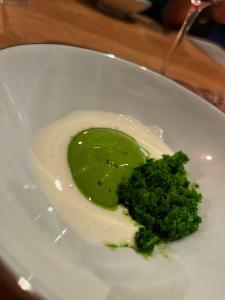
Any good chef would never start transitioning into dessert without a palate cleanser. This is at the very least true in a restaurant of this caliber. And next up would be a very small bowl of a refreshing palate refresher that Massimo calls “Think Green.”
This simple dish was also incredibly complex, filled with flavors that most people would never consider. Even those who think themselves a serious foodie.
A PERFECT TRANSITION
At the bottom and to the left hand side is a smooth green foam that tastes a bit like basil. I could have sworn I heard them mention arugula. This would make sense as an addition to the basil, as it’s light, and airy.
There is a light white drizzle that reminds me of creme’ fraiche. It’s very possible that that’s exactly what it is.
On the right hand side is a pile of green granita. It tastes of apple juice, lime and oregano. Vegetal and fruity all at the same time.
Hiding underneath the granita and the foam comes the most unexpected ingredient: caper leaves! Capers in general are known for their briny saltiness. However those flavors are incredibly mild. It is just salty and briny enough to add a perfect layered component to the dish.
It does the trick. My palate had been joyfully overtaken by the former course! But this delicious and strange combination is perfect for transitioning me to the dessert course.
COURSE 8 – OOPS! I DROPPED THE LEMON TART
Of all 8 courses, there are three that I couldn’t wait to experience: the ages of Parmigiano-Reggiano, the Painted Veal and now dessert. In fact, this dessert has become so world-renowned that artists have depicted it in paintings. Additionally, one of Massimo’s incredible Ferraris has a painting of it on the front.
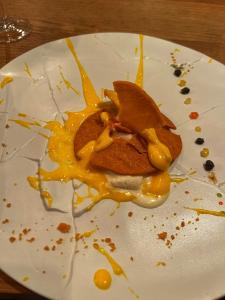
And now, here I am about to enjoy the last of these iconic dishes. I feel as if my life as a chef has been leading up to this moment.
THE BEAUTIFUL MESS
Arriving to my table is a gorgeously messy plate. The plate itself is custom, and looks to be a broken plate that has been glued back together.
Sitting in the middle is a splash of lemon curd topped with lemon gelato. Resting on top as a broken crown is the lemon crisp, in pieces. The vibrancy of the yellow colors is overwhelming. Precariously added to the side of the plate is a small line of various ingredients meant to be mixed into the dessert: candied citrus peel, fresh oregano and dried capers.
The combination of caper to lemon is like salt to caramel. The oregano addition creates a strange and inviting connection to lemon pasta dishes I remember from the past.
As I talk with my fellow table mates, I share my thoughts more fully on this. If you were enjoying a pasta with lemon, caper, oregano and cream, you would be enjoying a delicious dish. The only major difference is that this is presented as a dessert. And it is absolutely fantastic.
BROKEN THINGS
There are a few more treats that are added onto the end of the meal. However the dessert is where I am left daydreaming and considering what I’ve just experienced.
Before the dessert arrives, Massimo and chef Jessica tell more of the origin story.
Massimo talks about his love of art often. His home we are staying in has much of his collection on display. Of special note are those
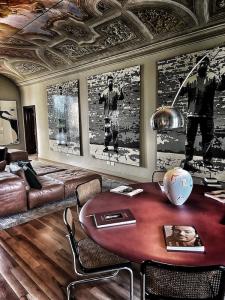
from the artist Ai Weiwei. He is an artist who is known for his depiction of broken things turned into art. There is even a massive wall mosaic that depicts Ai Weiwei performing one of his most famous pieces. In the piece, he shatters an ancient piece of pottery. He then turns the broken pieces into art.
FIRST EDITION LEMON TART
As Massimo is telling us about this, he paints another picture. He speaks of a day when he is carrying his first-edition lemon dessert out of the kitchen. Tragically, it falls to the floor. The dish shatters, along with the dessert flying all over. As he stares at the mess he’s made, he can’t help but notice the beauty of the disaster in front of him. In turn, he begins considering a new way to present the dish. Thus, “Oops! I dropped the lemon tart” is born.
How can a person not stop to consider the love that God has for broken things? The love He has in His ability to take something that has completely fallen apart, and wisely and creatively put it back together.
A LOVE FOR BROKEN THINGS
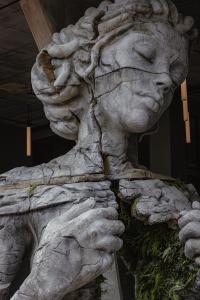
The heart of God is not, and never has been punishment for brokenness. When Adam and Eve fall apart in the garden, He puts them back together again.
When Samson is standing among the Philistines who are taunting him and making a mockery of his faith, Samson calls on the Lord. He repents. And after God begins healing him and restoring him, the next thing that happens is brokenness. Samson defeats thousands of Israel’s enemies by crashing in the enormous building he’s imprisoned in. While his victory also leads to his death, the beauty is that it gives Israel rest from their enemies.
When we remember the passion of Jesus, we remember by breaking the bread, and drinking the wine. It reminds us of His broken body and spilled blood that leads to our redemption. The promise that His resurrection is our resurrection, in spite of the pain and suffering that comes before.
OH THERE YOU ARE, JESUS!
As Massimo sets his beautiful broken dessert in front of me, I hold even tighter to what I believe. What I believe is that brokenness is still being made beautiful. I remember that the lost are still worth being found, the shameful can still trade in their ashes for beauty. I am sitting here in the same room as the man who was once named the best chef in the world. And in that man, I see brokenness as a unique characteristic of his success.
As I think about the beautiful Savior of the world, I’m grateful that He puts His characteristics within us. And this is whether we realize it or not. I may not know exactly what Massimo’s faith looks like, but I can absolutely see Jesus in His eyes.
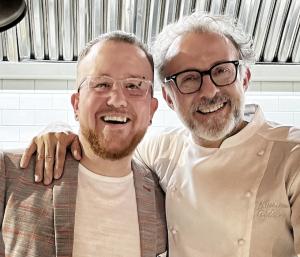
And since this is only the first night, I’m convinced that there will be many more revelations.
Stay tuned for part 2, and be sure to follow me for more stories at The Fat Pastor.
Interested in hearing more about travel in Italy? Check out my visit to Matera, one of Europe’s oldest cities.



